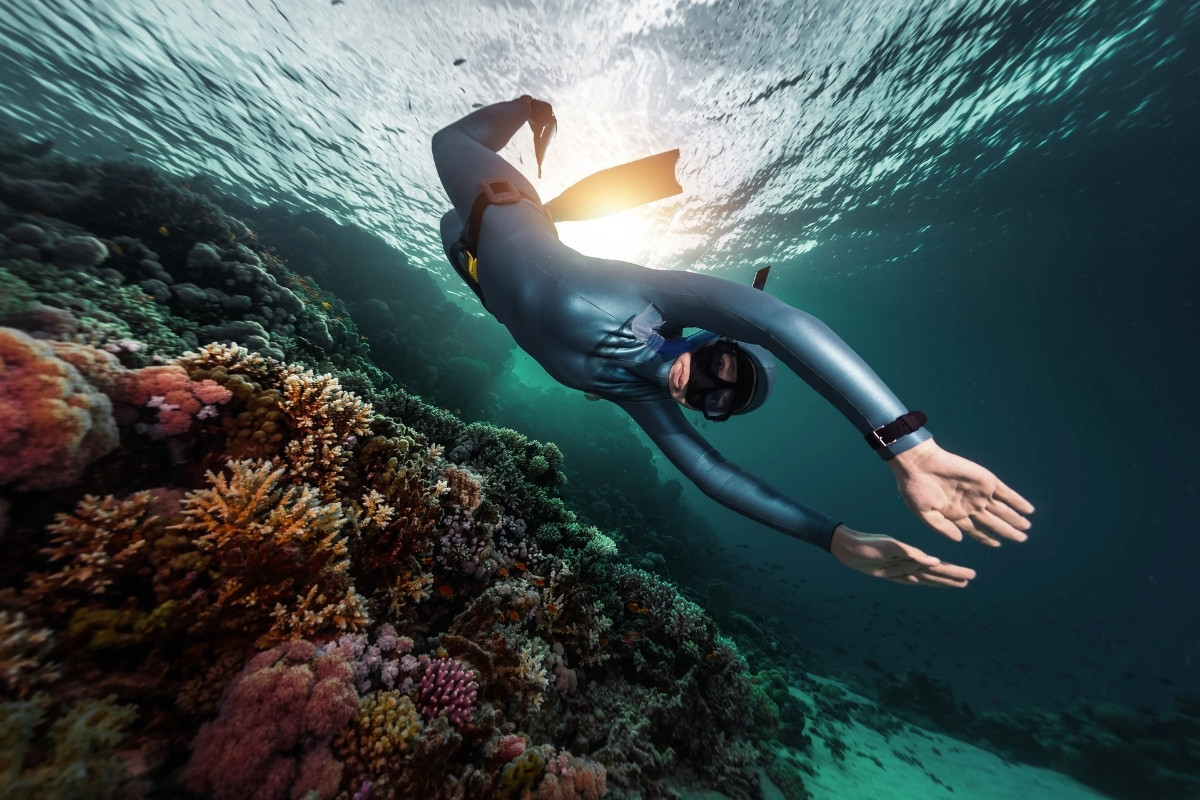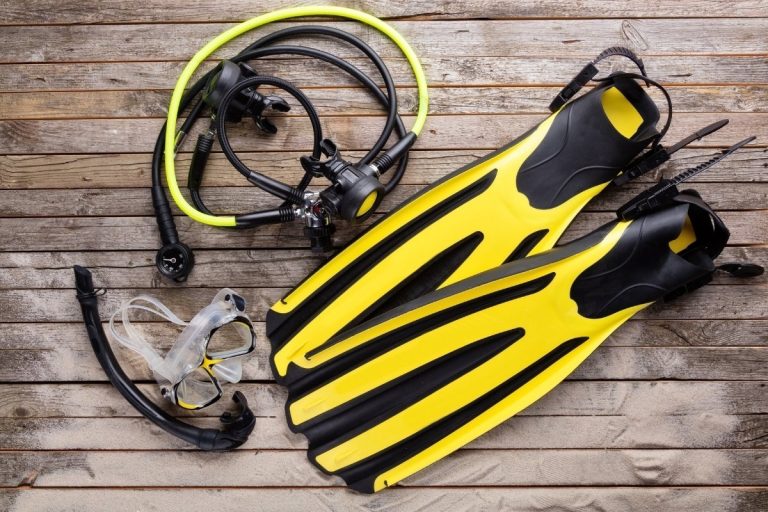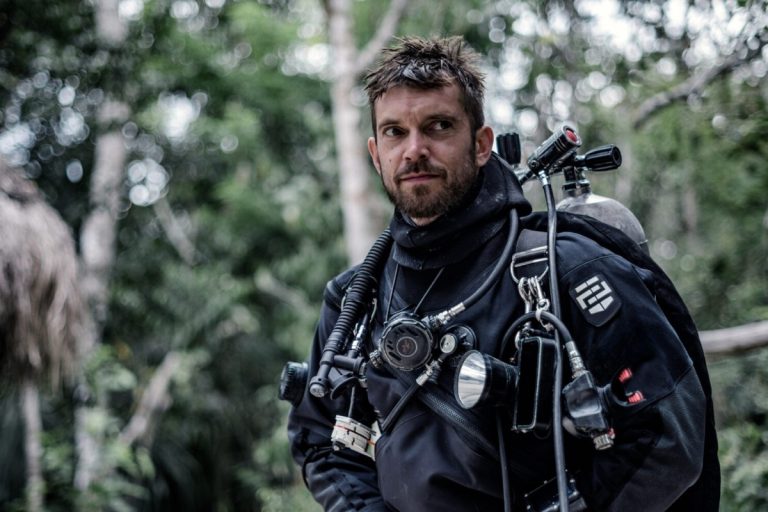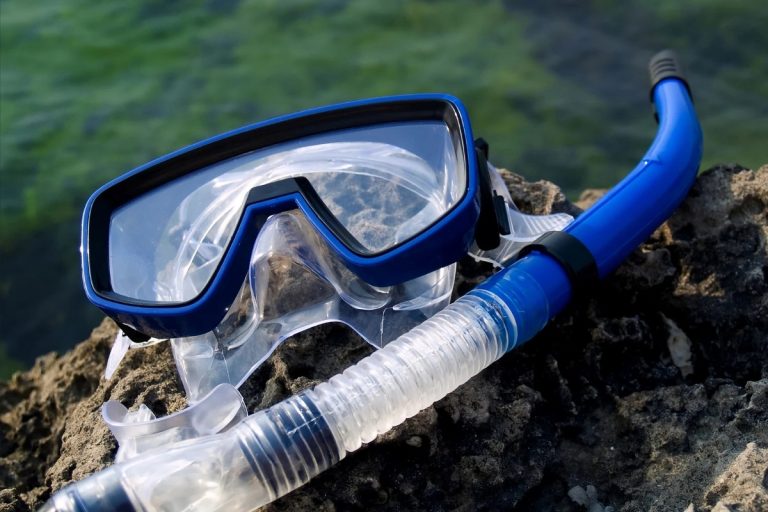Getting Started with Underwater Exploration
Water sports enthusiasts often find themselves drawn to the peaceful world beneath the surface, where colorful marine life and stunning underwater landscapes await. Two of the most accessible ways to experience this aquatic realm are snorkeling and freediving, each offering unique perspectives on ocean exploration.
Both activities share common ground in their reliance on breath-holding and basic swimming skills, yet they cater to different comfort levels and adventure goals. Whether you’re planning a tropical vacation or looking to develop serious underwater skills, understanding these disciplines will help you choose the right path for your aquatic journey.
What is Snorkeling?
Snorkeling represents the gateway to underwater exploration, requiring minimal equipment and training while offering maximum enjoyment. Participants float on the water’s surface, breathing through a snorkel tube while observing the underwater world through a mask. This surface-based activity allows for extended observation periods without the need for breath-holding skills.
The beauty of snorkeling lies in its accessibility. Children as young as eight can participate with proper supervision, and the learning curve is gentle enough for most people to master within minutes. Modern snorkeling gear has evolved to include features like dry-top snorkels and anti-fog masks, making the experience more comfortable than ever.
What is Freediving?
Freediving takes underwater exploration to the next level, involving breath-hold diving to various depths without breathing apparatus. This ancient practice combines physical conditioning, mental discipline, and technical skills to achieve remarkable underwater feats. Freedivers develop the ability to hold their breath for several minutes while diving to depths that can exceed 100 feet.
The sport encompasses multiple disciplines, from dynamic apnea (horizontal distance swimming) to constant weight diving (descending and ascending using fins). Each discipline requires specific training and equipment, making freediving both a recreational activity and a competitive sport with world records constantly being pushed to new limits.
Differences Between Snorkeling and Freediving
The primary distinction lies in depth and duration underwater. Snorkelers remain at the surface, occasionally duck-diving a few feet down, while freedivers actively pursue depth and extended breath-holds. Equipment requirements also differ significantly, with freedivers needing specialized gear designed for pressure changes and extended underwater time.
Training intensity varies dramatically between the two activities. Snorkeling requires basic swimming ability and comfort in water, while freediving demands dedicated breath-hold training exercises, equalization techniques, and safety protocols. The risk profiles also differ, with freediving carrying higher stakes that require proper education and supervised practice.
Essential Gear for Snorkeling
Selecting appropriate snorkeling equipment can make the difference between a frustrating experience and an unforgettable underwater adventure. Quality gear enhances comfort, safety, and visibility while ensuring you can focus on the marine life rather than equipment malfunctions.
The snorkeling gear market offers options ranging from budget-friendly basic sets to professional-grade equipment. Understanding the key features and differences helps you make informed decisions based on your experience level, frequency of use, and specific needs. Investment in quality gear pays dividends in comfort and durability over time.
Types of Snorkels
Traditional J-shaped snorkels remain popular for their simplicity and reliability, featuring a basic tube design that requires clearing water manually. These models work well for experienced snorkelers who prefer minimal complexity and maximum control over their breathing apparatus.
Dry-top snorkels incorporate a float valve mechanism that seals the tube when submerged, preventing water entry during duck dives. This technology significantly reduces the need for clearing techniques, making them ideal for beginners or those who frequently dive below the surface during snorkeling sessions.
Semi-dry snorkels combine features from both designs, offering splash guards to minimize water entry while maintaining the clearing capabilities of traditional models. These versatile options suit intermediate snorkelers who want some protection without sacrificing the responsive feel of conventional snorkels.
Choosing the Right Snorkel Mask
Mask fit represents the most critical factor in snorkeling comfort and safety. A properly fitting mask creates a watertight seal without excessive pressure, allowing for hours of comfortable use. The best approach involves trying multiple masks to find one that naturally conforms to your facial structure without gaps or pressure points.
Top snorkel masks for a wide field of view feature low-volume designs that sit closer to the face, reducing the amount of air space that needs equalizing during duck dives. Tempered glass lenses provide superior clarity and safety compared to plastic alternatives, while silicone skirts offer better sealing and durability than rubber options.
Lens configuration affects both vision and functionality. Single-lens masks maximize field of view, while dual-lens designs allow for prescription lens inserts. Some models include purge valves for easy clearing, though many experienced snorkelers prefer simple designs without additional mechanisms that might fail.
Fins and Other Accessories
Fin selection depends on your swimming strength, intended use, and personal preference. Full-foot fins work well in warm water conditions and provide a barefoot feel, while open-heel fins accommodate booties for cold water protection and offer adjustability for different users.
Blade length and stiffness affect propulsion efficiency and leg fatigue. Longer, stiffer blades generate more thrust per kick but require stronger leg muscles, while shorter, more flexible options reduce fatigue during extended snorkeling sessions. Split fins offer an alternative design that some users find more comfortable for casual snorkeling.
Additional accessories enhance the snorkeling experience without being essential. Mesh gear bags facilitate drying and transport, while anti-fog solutions keep masks clear. Rashguards provide sun protection and prevent jellyfish stings, making them valuable additions for tropical snorkeling adventures.
Freediving Essentials
Freediving equipment differs significantly from snorkeling gear, designed to withstand pressure changes and support extended breath-hold activities. The specialized nature of freediving gear reflects the sport’s technical demands and safety requirements, making proper equipment selection crucial for both performance and safety.
Professional freediving setups can represent substantial investments, but quality equipment enhances safety margins and performance capabilities. Understanding the specific requirements of freediving basics including safety and gear helps prioritize purchases and ensures compatibility between different equipment pieces.
Freediving Fins
Freediving fins feature longer, stiffer blades than snorkeling fins, designed to maximize propulsion efficiency during deep dives. The increased blade length generates more thrust per kick, essential for reaching significant depths and returning to the surface with minimal energy expenditure.
Materials vary from plastic and fiberglass to carbon fiber, each offering different performance characteristics. Carbon fiber fins provide the ultimate in efficiency and responsiveness but come at premium prices. Fiberglass options offer excellent performance at moderate costs, while plastic fins serve budget-conscious beginners adequately.
Foot pocket design affects comfort during extended freediving sessions. Full-foot pockets eliminate the need for booties, reducing drag and providing direct power transfer. However, proper sizing becomes critical since the fins must fit securely without causing circulation problems during long training sessions.
Wetsuits for Freediving
Freediving wetsuits require specific design features to accommodate the sport’s unique demands. Open-cell neoprene provides superior insulation and flexibility compared to closed-cell alternatives, though it requires careful handling and lubrication for donning. The smooth interior surface creates a suction effect that enhances thermal protection.
Thickness selection depends on water temperature and individual cold tolerance. Tropical waters might require only 3mm suits, while temperate conditions often demand 5mm or 7mm thickness. Two-piece suits offer versatility, allowing different thicknesses for upper and lower body based on personal thermal needs.
Fit represents the most critical factor in wetsuit performance. Freediving suits should fit snugly without restricting breathing or circulation. Custom-fitted suits provide optimal performance but require significant investment, while off-the-rack options work well for recreational freedivers when properly sized.
Weight Belts and Accessories
Proper weighting enables neutral buoyancy at target depths, crucial for efficient freediving. Weight belts allow fine-tuning of buoyancy characteristics, with lead weights distributed to maintain proper body position during descent and ascent phases.
Belt materials range from rubber to nylon webbing, each offering different stretch characteristics and durability. Rubber belts stretch with wetsuit compression at depth, maintaining consistent fit throughout the dive. Quick-release buckles provide essential safety features, allowing rapid weight ditching in emergency situations.
Weight distribution affects diving posture and efficiency. Concentrated weights at the waist can cause head-down positioning, while distributed systems maintain better body alignment. Neck weights offer additional fine-tuning options for experienced freedivers seeking optimal trim.
Breath-Hold Techniques
Developing effective breath-holding abilities forms the foundation of successful freediving, requiring both physical conditioning and mental training. These skills extend beyond simple lung capacity, encompassing relaxation techniques, oxygen conservation methods, and psychological preparation for extended underwater time.
The science behind breath-holding involves understanding mammalian dive reflexes, oxygen metabolism, and carbon dioxide tolerance. Proper training progressively develops these natural abilities while maintaining safety margins. Breath-hold training exercises provide structured approaches to skill development without excessive risk.
Understanding Breath-Hold Diving
The human body possesses remarkable adaptations for underwater activity, inherited from our evolutionary past. The mammalian dive reflex triggers physiological changes that conserve oxygen and extend underwater time, including reduced heart rate, blood shift to vital organs, and increased oxygen-carrying capacity.
Carbon dioxide tolerance often limits breath-hold duration more than oxygen availability. Training focuses on gradually increasing CO2 tolerance while maintaining consciousness and control. This process requires careful progression and proper supervision to avoid dangerous hypoxic conditions.
Mental preparation plays an equally important role in breath-hold performance. Anxiety and stress consume oxygen rapidly, while relaxation and meditation techniques extend underwater time significantly. Visualization and mental rehearsal help prepare for the sensations and challenges of extended breath-holds.
Training for Longer Breath-Holds
Structured training programs develop breath-hold abilities safely and effectively. Dry land exercises build lung capacity and breathing efficiency without water-related risks. These sessions include static breath-holds, breathing pattern work, and relaxation techniques that translate directly to underwater performance.
Pool training provides controlled environments for applying breath-hold skills in water. Static apnea exercises develop confidence and familiarity with underwater sensations, while dynamic training improves swimming efficiency during breath-holds. Proper supervision remains essential during all water-based training activities.
Progressive overload principles apply to breath-hold training, with gradual increases in duration and difficulty. Training tables provide structured approaches to improvement, alternating work and rest periods to maximize adaptation while minimizing risks. Consistency in training yields better results than sporadic intense sessions.
Safety Tips for Snorkeling and Freediving
Water activities carry inherent risks that require proper preparation and awareness to manage effectively. Both snorkeling and freediving present unique safety challenges, from equipment failures to environmental hazards and medical emergencies. Understanding these risks and implementing appropriate safety measures protects participants and enhances enjoyment.
Safety culture in underwater activities emphasizes prevention over reaction, with proper planning, equipment maintenance, and skill development reducing risk exposure. Emergency preparedness includes both prevention strategies and response capabilities when situations develop beyond normal parameters.
Buddy System in Diving
The buddy system provides essential safety redundancy for both snorkeling and freediving activities. Partners monitor each other for signs of distress, equipment problems, and environmental hazards while providing assistance when needed. This mutual support system has prevented countless accidents and saved many lives.
Effective buddy teams require clear communication protocols and defined responsibilities. Pre-dive briefings establish signals, emergency procedures, and dive plans that both partners understand completely. Regular check-ins during activities ensure continuous monitoring and immediate response capability.
Partner selection affects safety significantly. Compatible skill levels, similar comfort zones, and shared safety priorities create effective teams. Mismatched partners can create additional risks when one person exceeds their capabilities trying to keep up with a more experienced buddy.
Recognizing Signs of Distress
Early recognition of distress signals enables prompt intervention before situations become critical. Physical signs include unusual fatigue, disorientation, difficulty with equipment, or changes in swimming patterns. Behavioral indicators might include anxiety, poor decision-making, or deviation from planned activities.
Freediving-specific warning signs include shallow water blackout symptoms, extended surface recovery times, or difficulty equalizing during descent. These indicators require immediate attention and possible activity termination to prevent serious incidents.
Environmental stress factors compound individual distress signals. Cold water, strong currents, poor visibility, or equipment malfunctions can overwhelm even experienced participants. Recognizing when conditions exceed safe parameters prevents accidents before they develop.
Emergency Procedures
Emergency response procedures must be practiced and understood before entering the water. Basic rescue techniques, first aid skills, and emergency communication methods provide essential capabilities when accidents occur. Regular training maintains proficiency and confidence in these critical skills.
Specific emergency scenarios require different response strategies. Unconscious divers need immediate surface support and rescue breathing, while conscious but distressed individuals might need calming and assistance reaching safety. Equipment failures require backup plans and alternative solutions.
Communication with emergency services requires preparation and practice. Location identification, injury assessment, and resource coordination become critical during actual emergencies. Pre-positioned emergency equipment and communication devices enhance response capabilities significantly.
Snorkeling Destinations
Choosing appropriate snorkeling locations enhances safety and enjoyment while providing memorable underwater experiences. Destination selection involves evaluating water conditions, marine life diversity, accessibility, and safety infrastructure. Research and local knowledge help identify the best spots for different skill levels and interests.
Local regulations and environmental considerations affect destination choices. Protected areas might have specific rules about equipment use, group sizes, or seasonal restrictions. Understanding these requirements prevents legal issues and supports conservation efforts.
Popular Locations
Tropical destinations offer warm water temperatures and diverse marine ecosystems ideal for snorkeling. Caribbean locations like Barbados and the Bahamas provide excellent visibility and abundant sea life, while Pacific destinations such as Hawaii and Fiji offer unique underwater landscapes and species diversity.
Closer to home, many regions offer excellent snorkeling opportunities. Snorkeling spots in Hong Kong provide surprising diversity despite urban proximity, with locations like Sharp Island and Hoi Ha Wan offering clear water and interesting marine life. Local spots often provide convenient access and familiar conditions for skill development.
Seasonal variations affect destination quality significantly. Weather patterns, water temperature, and marine life activity change throughout the year, making timing crucial for optimal experiences. Local dive shops and marine parks provide current condition reports and seasonal recommendations.
Local Hazards to Consider
Every snorkeling destination presents unique environmental challenges requiring specific preparation and awareness. Current patterns, tide changes, and weather conditions can transform safe locations into dangerous situations rapidly. Understanding local hazard patterns helps avoid problematic conditions.
Marine life hazards vary by location and season. Jellyfish blooms, sea urchin populations, and territorial fish species require different avoidance strategies. Some areas have dangerous marine animals like sharks or sea snakes that demand specific safety protocols.
Physical hazards include sharp coral, rocky shores, boat traffic, and underwater obstacles. These environmental factors require careful navigation and appropriate protective equipment. Local knowledge and guided tours help identify and avoid these hazards effectively.
Equipment Care and Maintenance
Proper equipment maintenance extends gear life, ensures reliable performance, and maintains safety standards. Saltwater, sand, and sun exposure create harsh conditions that degrade equipment rapidly without appropriate care. Regular maintenance routines prevent equipment failures and expensive replacements.
Investment in quality gear justifies careful maintenance practices. Professional-grade equipment can provide years of reliable service with proper care, while neglected gear fails prematurely regardless of initial quality. Understanding specific maintenance requirements for different materials and components optimizes equipment longevity.
Cleaning and Storing Gear
Post-dive cleaning removes salt, sand, and organic matter that cause corrosion and degradation. Fresh water rinses eliminate salt crystals that continue damaging equipment long after use. Thorough cleaning includes disassembling removable components and cleaning interior surfaces where salt accumulates.
Proper drying prevents mold, mildew, and material degradation. Complete air drying in shaded areas protects equipment from UV damage while eliminating moisture. Forced air circulation accelerates drying in humid conditions, while direct sunlight should be avoided to prevent material breakdown.
Storage conditions affect equipment longevity significantly. Cool, dry environments with stable temperatures provide optimal conditions. How to care for silicone and tempered-glass masks includes specific storage recommendations that prevent distortion and maintain sealing properties. Proper organization prevents damage from compression or contact with sharp objects.
Repairing Damaged Equipment
Minor repairs can extend equipment life and prevent complete failures. Mask strap replacements, fin strap repairs, and snorkel mouthpiece changes represent common maintenance tasks that most users can perform. Basic repair kits provide essential tools and materials for field repairs.
Professional repair services handle complex problems beyond user capabilities. Mask reglazing, wetsuit patching, and fin blade repairs require specialized tools and expertise. Knowing when to attempt repairs versus seeking professional help prevents further damage and ensures proper functionality.
Replacement timing depends on equipment condition and safety considerations. Worn masks that leak consistently, fins with cracked blades, or wetsuits with multiple tears might require replacement rather than repair. Safety equipment should never be compromised by attempting repairs beyond proper standards.
Frequently Asked Questions
What is the main difference between snorkeling and freediving?
The main difference lies in depth and duration; snorkelers primarily remain at the surface while freedivers dive deeper and hold their breath for extended periods.
What equipment is essential for snorkeling?
Essential snorkeling equipment includes a mask, snorkel, and fins, with options varying based on experience level and comfort.
How can I improve my breath-hold for freediving?
Improving breath-hold capabilities involves structured training programs that include relaxation techniques, oxygen conservation methods, and progressive duration increases.
What safety measures should I take while snorkeling or freediving?
Key safety measures include using the buddy system, recognizing signs of distress, and having emergency response procedures in place.
What are some popular snorkeling destinations?
Popular snorkeling destinations include tropical locations like the Caribbean, Hawaii, and Fiji, as well as local spots that offer diversity and accessibility.
Embarking on Your Underwater Journey
Whether you choose the simplicity of snorkeling or the depth of freediving, understanding the essentials of each activity will enhance your underwater adventures. With proper preparation, quality gear, and a focus on safety, you can explore the captivating world beneath the waves and create unforgettable memories.






